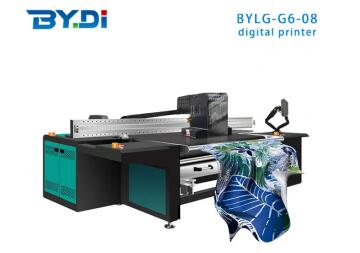Textile printing has been an integral part of the fashion industry for centuries. However, with the advancements in technology, digital textile printing has emerged as a more efficient and sustainable alternative to traditional textile printing methods. In this article, we will discuss the disadvantages of traditional textile printing and the advantages of digital textile printing.
Disadvantages of Traditional Textile Printing
Traditional textile printing methods, such as block printing and screen printing, involve a significant amount of manual labor and time. The process requires skilled artisans to carve intricate designs into blocks or screens and apply them to the fabric using ink or dye. This can lead to longer lead times and higher costs, making it less suitable for large-scale production.
Another disadvantage of traditional textile printing is its limited design capabilities. Due to the nature of the process, it is difficult to achieve intricate and detailed designs, and each color requires a separate block or screen. This can limit the number of colors and designs that can be used, making it less versatile than digital textile printing.
Additionally, traditional textile printing methods can be wasteful, as they require a significant amount of water and energy to produce. The process can also generate a significant amount of waste, as unused ink and dye can be difficult to recycle.

Advantages of Digital Textile Printing
Digital textile printing, on the other hand, offers a range of advantages over traditional textile printing methods. The process involves using a digital textile printer or direct to fabric printer to print designs directly onto the fabric. This eliminates the need for separate blocks or screens, reducing lead times and costs.
One of the main advantages of digital textile printing is its design capabilities. The process allows for a wider range of colors and designs, including high-quality photographic prints and intricate patterns. This makes it a more versatile option for designers and manufacturers.
Digital textile printing is also more efficient and sustainable than traditional printing methods. The process uses less water and energy, produces less waste, and is more precise, reducing the amount of ink or dye used. This makes it a more environmentally friendly option, which is becoming increasingly important in the fashion industry.
Another advantage of digital textile printing is its scalability. The process can be easily adapted for large-scale production, making it a more viable option for manufacturers. Digital textile printing machines can also produce prints on demand, reducing the need for large amounts of inventory.
Conclusion
In conclusion, while traditional textile printing methods have their place in the fashion industry, they have a number of disadvantages that make them less suitable for large-scale production. Digital textile printing offers a range of advantages, including increased efficiency, versatility, and sustainability, making it a more attractive option for designers and manufacturers.
The emergence of digital textile printing machines and direct to fabric printers has made the process more accessible and cost-effective, allowing designers and manufacturers to produce high-quality prints on a range of fabrics. As the demand for sustainable and efficient production methods continues to grow, digital textile printing is likely to become an increasingly popular option in the fashion industry.
Media Contact
Company Name: Zhejiang Boyin Digital Technology Co., Ltd.
Email: Send Email
Phone: 0086-18368802602
Country: China
Website: https://www.boyindtg.com/
